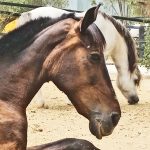 Rescue. “To save from a dangerous or difficult situation.” Horse rescue centre. A place where horses can be safe from a dangerous or difficult situation, where they can find refuge. Refuge. “The state of being safe or sheltered from pursuit, danger, or difficulty.” I used to think that, if a facility is called a horse rescue centre, it must by definition be a place where horses are safe from neglect and abuse, so I volunteered. Then I started to notice disquieting occurrences. Aberrations, I thought they were, until I met a horse called Rhianna, a victim of severe neglect who had arrived at our rescue centre. Her experience led me to examine other questionable occurrences and eventually to ask myself whether in some instances we should not consider rescuing rescued horses from their rescuers.
Rescue. “To save from a dangerous or difficult situation.” Horse rescue centre. A place where horses can be safe from a dangerous or difficult situation, where they can find refuge. Refuge. “The state of being safe or sheltered from pursuit, danger, or difficulty.” I used to think that, if a facility is called a horse rescue centre, it must by definition be a place where horses are safe from neglect and abuse, so I volunteered. Then I started to notice disquieting occurrences. Aberrations, I thought they were, until I met a horse called Rhianna, a victim of severe neglect who had arrived at our rescue centre. Her experience led me to examine other questionable occurrences and eventually to ask myself whether in some instances we should not consider rescuing rescued horses from their rescuers.
s
Rhianna
Shock. This was my initial response when I first saw Rhianna a little over a year ago. Emaciated, she shuffled her collection of bones slowly across the hard, dry earth in her little paddock, aged in her gait well beyond her years. A glance at her feet was enough to explain the cause. It had clearly been a long time since anyone had tended to her hooves, for they had lengthened down and out into high-heeled slippers. And I immediately knew that, if this mare was to be saved, rehabilitation was going to be a lengthy, challenging process.
It is easy to feel sorry for a severely neglected horse but not this lovely mare, not when you looked into her eyes. I recall the wonder I felt. She was not a victim, this horse. Rhianna was a survivor, a bit like our Gulliver, who had taken the ravages of abandonment in his youth completely in his stride to live until just short of thirty. Her eyes, her demeanour, her energy, they all cried life. There was a strength and determination in her which resonated strongly within me. And I knew instinctively that I wanted to do what I could to help this mare, although I was also aware that I had no say in what would happen to her. So I gave her what I could once she had settled in, Equine Touch, at liberty. She lapped it up. If she was a cat, she would have purred.
s
Butchery
There is no other word to describe it. Days later we arrived at the horse rescue centre to share Equine Touch with a number of horses and discovered that some butcher masquerading as a barefoot trimmer had chopped the soles off her hooves along with much of the overgrown toes. The mare was in absolute agony, understandably so. She kept shifting her weight from one forehoof to the other and then gave up when nothing seemed to help, only to start all over again when the pain became too much. If it was anyone’s intention to devise one of the most viciously ingenious ways to torture a horse, they had succeeded. If it was not, some serious questions needed to be asked. [Please note: this is not intended to serve as a criticism of barefoot trimmers. Not all barefoot trimmers are rehabilitation experts in the same way that not all farriers are either.]
In a healthy horse the front legs bear up to 70% or more of their weight. Had anyone bothered to consider that in her severely compromised condition with massive muscle atrophy in the back and hindquarters the proportion was likely to be significantly higher? Had anyone also considered how much time it had taken for Rhianna to develop such slippers and the degree to which her body had learned to compensate for the severe impairment of her gait? Had anyone considered the need for a more gradual approach to enable the horse to continue moving as her hooves shortened and to give her body an opportunity to readjust as they did?
Of course, the vet may have felt that there was a need to act sooner because of potential or actual rotation of the pedal bone or for some other compelling reason. If this was the case, had anyone considered the need to call in an equine podiatrist to do it, given that neither the vet nor the hoof trimmer who did the job could be expected to have the expertise and experience to take on such a major, long-term hoof rehabilitation project without expert assistance? I know of a proficient, experienced equine podiatrist who visits the area every five weeks (something which the horse rescue centre president was also aware of) and another who lives only one and a half hours away. And even then, had anyone considered giving Rhianna a bit of time to put on some weight and regain strength before exposing her to such an invasive intervention?
s
The horror
And then I noticed what looked like part of the dressing of the wounds – which the underside of Rhianna’s hooves had become – lying on the bedding in the shelter to which she had been confined. Initially I did not understand why it was there, because a glance at her hooves revealed that the dressing had been secured with black plastic tape. Rhianna was not wearing any boots, surprisingly, because that was the least I would have expected with such wounds. She was standing up against the electric tape (no current, of course), her eyes dull and head bent in resignation. When she moved suddenly to lie down I understood. The hoof walls, sharpened where the cut had been made, had sheared off the plastic tape around most of their perimeter, with the result that almost all of the dressing had been scraped away. When Rhianna was upright, the naked wounds under her feet were exposed to the soft bedding on the earthen surface in her shelter, most of which was covered in urine or manure. Ordinarily, she would have had to have waited in those conditions until the vet arrived later to change what was left of the dressing.
Rhianna needed boots in a hurry. When we called the president of the horse riding centre, the key decision-maker and arbiter of horse management, to report what we had found, we learned that the only pair available at the centre did not fit her and no one had measured the mare’s hooves to order others. This we then did. It was a lengthy, difficult task to persuade Rhianna to raise each hoof to allow us to slip a bit of horse feed bag underneath it, so that we could draw its outline to measure it. I still had a pair of Pip’s old Norwegian jogging shoes at home. Unlike many horse boots, they were not rigid, not even the soles which, while offering protection and comfort, could move with the hoof soles or in this case the pus-filled mess which passed for them. They might just fit. In the meantime we would order a couple of pairs to make it possible to fit clean boots whenever the dressing was changed.
When I returned with the boots, the vet was valiantly trying to lift one of Rhianna’s legs while endeavouring to change the dressing, helped only by a young woman who was simultaneously holding the lead rope attached to the halter on the mare’s head. I immediately dropped everything to help. It was a supremely challenging exercise. The pain was so intense that Rhianna was extremely reluctant to raise her feet. Both the vet and I would reach down to grip the lower leg, exerting every effort to raise it. When it finally did come up I would try and balance it in my arms resting on a thigh, while the vet worked as fast as he could. Often the pain in the other hoof would cause her to pull her leg free and her naked hoof would plough into the dirty bedding, so we could start again. Once the wound was dressed, we then had to pull on the boots. It was a tight fit but they just had to do until the new ones arrived. And this had to be done every single day. Who was available here to help the vet? Just this young woman? I remember coming away after we had completed the task, thinking that this was madness and unsustainable.
s
After-care?
What after-care? The horse rescue centre was hopelessly lacking in almost all the basic necessities to care for a horse in Rhianna’s condition, including manpower and few of the volunteers had the expertise and experience to know what was required. It was as though no one had given any thought to the huge amount of care and support that Rhianna would require after hacking off a third of her forehooves and changing their entire angle. In fact, no one seemed to have even considered something as basic as the need to lift the forelegs of a creature weighing as much as a small car with extreme pain in both hooves to clean the wounds and to apply and replace dressings once or twice a day, and how to ensure that the dressings stayed on, that the hooves were protected and afforded some comfort with the aid of boots, that the mare could be checked more frequently than only on the two occasions when the volunteers fed the horses or the vet came to change her dressings, and so forth.
Even with all the equipment and manpower that were required in this situation, it would have been extremely difficult to nurse Rhianna back to good health after the assault on her slippers. Without such basic necessities, convalescence seemed to be impossible.
s
Death
Rhianna’s condition worsened as expected. The life force so evident in her eyes at the outset began to dull, chipped away every minute by the inescapable pain of infection. Where were the boots that we had ordered? Foreign orders were notoriously slow, even when priority delivery was specified but this was ridiculous. We resigned ourselves to the seemingly inevitable and I started to wonder why no one was prepared to authorise a mercy killing sooner rather than later.
Finally, one day the boots arrived and we phoned the president of the horse rescue centre to make arrangements to deliver them to the yard and to teach whomever needed to know how to put them on and remove them. We were informed that Rhianna had been euthanised the day before. I was relieved but simultaneously devastated.
s
Abuse?
Just what had been done to this noble mare in the name of horse rescue? Was it not abuse and that on a scale which dwarfed most of the incidents of ill-treatment that the horse rescuers had to contend with in the normal course of their work? To be sure, it had not been the intention of the horse rescue centre’s president, the ultimate decision-maker, to inflict such suffering on Rhianna with a view to maiming, hurting and eventually killing her, although this was precisely what transpired. To the horse the absence of such intention was academic. With or without it, the outcome was the same.
An alternative? Was one available? The brutally frank answer is yes, there was. If it was clear that the horse rescue centre would not be able to help Rhianna because it did not have the resources to do so, something which should have been readily apparent to anyone whom one may expect to have the knowledge, expertise and skills to run such a centre, then it should have declined to do so. Although the alternatives were not easy in themselves, they would have been much fairer on the horse and everyone involved. The first alternative available was to seek another horse rescue centre which did have the resources available to help Rhianna. There are three others within one to four hours’ travel away, two of them within less than an hour. And if such an alternative was not available for one reason or another, there was always the option of euthanasia. No hindsight is required to conclude that these options were available when the horse rescue centre’s president decided on the course of action which subsequently unfolded. “We did the best we could,” she told us. I shuddered. If this was the best the horse rescue centre could do, then should we not contemplate rescuing rescued horses from their rescuers?
s
Rehoming failures
So was Rhianna’s experience a one-off aberration or one of a number of irregularities that occurred at the horse rescue centre which could be described as abuse, whether intentional or otherwise? And if other irregularities did occur, was the frequency so great as to refer to them as systematic rather than the odd exception?
During the times that we spent in the country visiting family and our mares (months at a time over four years), we conducted Equine Touch bodywork sessions with virtually all of the horses in the rescue centre at the time on a voluntary basis. This meant that we got to know the horses better than most, if not all, of the regular volunteers, who spent most of their time feeding and mucking out with relatively little time available for horse-human interactive such as grooming, washing or just hanging out. We also spent many hours with the horses outside feeding times when no one else was around. As such, we had ample opportunity to witness the horses interacting with each other in addition to knowing them through what they revealed to us during Equine Touch sessions, which was a good deal, physically, psychologically and emotionally.
And what occurred in the horse rescue centre during those times disturbed me greatly. The first thing that struck me was the large number of horses that returned to the centre after being rehomed. In all cases but one this was due to circumstances which had a debilitating effect on the horses involved and could be attributed to an absence of adequate preparations for rehoming (especially the lack of proper vetting of prospective adopters, minimal knowledge on the part of the centre president of the nature of the horses that she was putting up for adoption or the fact that the horse had not yet sufficiently recovered before being put up for adoption).
Last month alone there were two rehoming disasters involving three horses. In one case the horse rescue centre’s president reneged on an adoption contract to cater to the irresponsible demands of a financial benefactor. The horses, both mares who had just bonded with each other (which is relatively unusual, as mares usually bond with geldings or stallions and not other mares), had proved difficult to rehome, the one because she was dangerous to ride and the other because she was a pony who was to all intents and purposes blind. Ambra and Hope (the pony) were destined for a home with one of our Equine Touch students, where they would have continued to live together but would not have been ridden.
In the other case the horse concerned, who had served as an excellent demonstration model in a number of our Equine Touch courses, was returned after just four days. Within three days after returning to the horse rescue centre after what must have been a traumatic experience, the centre’s president arrived at the centre with the operator of a local riding centre. I had just finished giving one of the centre’s senior volunteers, a man with relatively little knowledge of or experience with horses, a free Equine Touch refresher session (he had previously completed the Foundation course which we had partly subsidised to help the horses in the centre) with the aid of the horse concerned, a sensitive but strong-willed gelding called Soli. The horse was immediately bundled into a truck to be taken off to the riding centre where, the horse rescue centre personally informed me, he would be ridden by children for two months during the holidays before being returned. And what would he be like when he returned? If the return of Danubio, another proud Equine Touch role model, following another failed rehoming project months earlier was anything to go by, he might have been crushed, depressed and sore in his back. Looking back, I try and find evidence of the fulfilment of the duty of care one might expect from a horse rescue centre president in these incidents but I must confess that I have difficulty doing so.
s
Obsession with riding
The strategy which the horse rescue centre pursues under the guidance of its president is to move horses on and rehome them as soon as possible. The way in which this is to be done is to turn as many of the centre’s inmates as possible into riding horses as soon as possible. One does not need to be a qualified saddle-fitter as we are to know that in a horse rescue centre with limited means and a relatively high turnover of horses, it is highly unlikely that any saddle placed on a rescue horse’s back will fit. In the first place many of the horses that had a saddle placed on their backs were not ready to be ridden because of their physical condition. Secondly, it is simply impossible for one or two saddles to fit so many backs with different shapes and characteristics, while a failure to use a saddle would simply create a whole new range of difficulties. Then there were also the horses that had psychological and/or emotional issues as well, even though they might be capable of being ridden physically.
The horses with whom we shared Equine Touch always showed us when their riding programme started and the way they did so was disconcerting. Horses that we had worked on multiple times without any difficulties and with their full cooperation would suddenly hesitate, if not turn away, when we approached them with a halter. If we put the halter down, they would allow us to share the Equine Touch with them at liberty. Pick up the halter again and they were off. One bay gelding, Harry, was very emphatic in this respect. Generally, once we shared the Equine Touch with such horses at liberty, they were happy for us to put a halter on them again. However, there were the odd few, such as the mares, Estrella (who had been a star performer at one of our Equine Touch courses) and Ambra (who proved to be downright dangerous to the rider) who would no longer allow us in.
And if the horses did not show us through their aversion to the halter as a symbol of the riding or longeing (now and then with side reins forcing them into a frame), they revealed their pain to us when we performed our procedures on their backs. In many cases we looked at the muscle wastage around their withers, flanks and hindquarters and were staggered that anyone could even have contemplated riding them. There was one old chestnut fellow in particular, Indio, a gelding who had starred in one of our Equine Touch courses, who fell into a depression and shut down. Within weeks he was dead.
s
Accidents
Then there were the accidents that happened in the horse riding centre. Fortunately, most were superficial, as they involved horses fighting with each other without any metal studs (a.k.a. – euphemistically – ‘shoes’) on their hooves. Clearly, there was a poor understanding of the relationships between the horses, especially in a horse rescue centre such as this one, which was starved for adequate space.
Some accidents were a bit more serious, however. Horses hurt themselves at times and much of this was avoidable. For instance, in the course of our last Equine Touch course at the horse riding centre during the second last weekend of June, two mares got caught up in a kicking contest over the metal bars that separated them from each other in a shared shelter, with one of them ending up straddling the divide, her forelegs in her own tiny paddock and her hindlegs in her neighbour’s. Fortunately, one of the students and myself managed to help her retrieve her hindlegs.
This particular incident was entirely preventable. The barrier separating the mares was far too low. This problem was solved in minutes by rigging up a temporary partition using a large wooden board and electric tape (without power) to secure it. One of the mares was Estrella, who was known to be averse to close company of the equine kind ( I suspect that she must have been an orphan as she is far more focused on humans than horses). The other mare, a black horse called Luna, had acquired a reputation as a ‘dominant’ horse (yes, one of those aberrations that are the creation of human captivity) to the point where the horse rescue centre president insisted that she needed to ‘be taught a lesson’. Again, I am not too sure that such a comment is evidence of the fulfilment of the kind of duty of care which one might hope of a horse rescue centre president.
s
Achievements
It would be all too unkind and untrue to suggest that the horse rescue centre had no achievements to be proud of. Of course it did. There is usually always a redeeming feature and so too in this case. And the president of the centre was at the forefront of them. Perhaps her single most important achievement in terms of helping the horses was to find them accommodation in a new, healthier, safer and more accessible centre. Yes, it is still inadequate in terms of the space that horses require for the daily movement that is so essential for their wellbeing but it is a vast improvement over what they had.
Secondly, the horse rescue centre president is a hugely successful networker. She has managed to bring together a band of ‘horsey’ and ‘non-horsey’ people who are very enthusiastic about the centre’s work, who all try to contribute to its success using the variety of talents at their disposal and who do so as volunteers. It is very moving to see their commitment and dedication.
Thirdly, it would seem from the various improvements that have been made since the centre moved to its new premises that the horse rescue centre president has also been very successful in raising funds to finance major new infrastructure improvements for the horses, their helpers and visitors.
s
Doubts
And yet we were still entertaining doubts. By this stage, we had established a mutually beneficial relationship with the horse rescue centre and its president. They hosted our Equine Touch courses in return for donations and both them and ourselves employed our respective networks to publicise each other’s endeavours. It was clearly a win-win situation. So why did it go belly-up?
There is always the proverbial straw, isn’t there. After all, the breakdown of a mutually beneficial relationship does not occur because of a single mishap. One of the meanings which the online Oxford dictionary ascribes to the word, ‘abuse’, is ‘use or treat in such a way as to cause damage or harm’. For years we had witnessed such abuse at the horse rescue centre. Initially, we thought we could make a difference. The horse rescue centre president used to invite us to various official functions, such as the annual general meeting, and regularly sought our advice in relation to various horses, because of our frequent contact with them when sharing Equine Touch and presumably our evident knowledge of horses and experience. We hoped that this would continue once we started arranging Equine Touch courses and initially it did.
The experience with Rhianna seemed to mark a turning point in our relations. The invitations to official functions diminished and then became a thing of the past, as did the occasions when the horse rescue centre president sought our advice. I suppose there comes a time when the frequency with which one’s questions are answered with inconvenient truths especially in relation to a core strategy such as riding, inevitably diminishes in the face of their unwelcome weight. Perhaps the explanation is to be found in this.
s
Abuse?
Whatever the case, when the break came, it occurred as the final straw of a long and growing series of doubts which we were having about the horse rescue centre. The questions that I started asking myself went to the heart of the matter. Is the horse rescue centre ultimately a place of refuge, rehabilitation, recovery and rehoming for the horses, as one might expect of an equine rescue project? Or is it more a source of moral fulfilment, community spirit and social interaction for the humans? True, the one need not preclude the other. But what if the balance was utterly skewed in favour of the humans? And what if this is occurring at the expense of the horses?
With the exception of the horses placed in foster homes until they are adopted and the odd success story of horses rehomed in other countries, there is no doubt in my mind that abuse does occur at the horse rescue centre and that it occurs regularly. And to the extent that the rehoming programme is largely a project designed to produce cheap riding horses for the locals and much of the expatriate (mainly British) community (who settle here not only because of the climate but also to stretch their income) and that far too many of those rehoming stories degenerate into disappointment if not tragedy, would it be fair not to conclude that the abuse is not only systematic but also partly inherent in the nature of the beast as it were? In short, the question could be whittled down to this: is the horse rescue centre in its present form not essentially a place for recycling abuse (Vicki coined the phrase) with the success stories representing the exception rather than the rule?
When one reaches the point where one feels a need to raise such a question, the answer becomes so academic to the point of being irrelevant. The fact that one has reached this point says enough.
s
Protecting the horse rescue centre
So successful has the president of the horse rescue centre been in bringing people together to work for, support and enjoy being part of the project, that one has to be very careful when making any statement which could be construed as critical. This happened to both Vicki and myself following posts on our Humans for Horses Equine Touch page on Facebook. Within a short period of time we received a request to rephrase part of our posts, which we did. The argument that was presented to us by way of justification was that any criticism could undermine the tremendously good work which the horse rescue centre is doing in general and its volunteers in particular. In fact, this argument even came to serve as justification for closing ranks around unethical behaviour on the part of the horse rescue centre president towards us and one of our Equine Touch students (along with unlawful conduct directed towards the latter), which led to our break with the centre. This was followed by the publication of an utterly false and misleading statement on the centre’s Facebook page, which effectively questioned our honesty and integrity. Apparently the end, protecting the horse rescue centre, justified the means.
It seems to me that such an approach entirely misses the point. If the work performed by the horse rescue centre and its volunteers is to be supported and not undermined, two things need to happen as soon as possible. The first is that decision-making powers in relation to the rehabilitation and rehoming of all of the equines need to be conferred on someone who has the knowledge and expertise to do so. At present this is not the case, because the president still has the power to override any manager that is assigned these tasks, as she has constantly been doing to date.
Secondly, and as importantly, accountability and transparency are absolutely essential in any body that relies on the goodwill of the public for its funding, assets and manpower, as the horse rescue centre does. At present, the closest thing that comes to this is a monthly newsletter. However, it is more of a publicity and communication vehicle for current and prospective supporters rather than a frank and honest exercise in accountability and transparency. The publication on the horse rescue centre’s website and Facebook page of profiles of its office bearers and staff listing their horse-related qualifications and experience along with annual financial statements setting out the centre’s assets, liabilities, income and expenditure would represent major steps in this direction. Other horse rescue centres manage to do this. Why not this one? After all, it is precisely such accountability and transparency which inspire confidence. The admission of difficulties is what may encourage people to contribute more in any way they can rather than their denial and concealment.
s
‘Natural horsemanship’
The horse rescue centre has just appointed a new rehabilitation and rehoming manager. By all accounts she is someone who has the knowledge and expertise which is required to make responsible decisions affecting the rehabilitation, wellbeing and rehoming of horses. She may be able to eliminate the frequent abuse of horses that I have witnessed in the horse rescue centre, provided that she bears ultimate responsibility and the centre’s president is not permitted to override her decisions.
Unfortunately, she is also a horse trainer who espouses ‘natural horsemanship’ training of the Parelli variety. Anyone who has studied the effects of ‘natural horsemanship’ training will be aware that, like conventional training, it relies on negative reinforcement, which is completely inferior to positive reinforcement approaches, such as clicker training. The bit and bridle are thrown out in favour of a harsh rope halter, which is capable of doing as, if not more, damage to the poll and fragile nasal bone extension than the bridle and bit to the poll and mouth, while the whip is traded in for a ‘carrot stick’, which is combination of stick and whip with the only resemblance to a carrot being its colour. This is usually accompanied by the vigorous smashing of a large metal clip used to attach a lead rope to the halter against the underside of the horse’s jaw to help instil ‘natural’ respect for the human, especially when backing up. To this toxic mix of ‘natural’ tools, ‘natural horsemanship’ training adds punishment and, more ominously, psychological manipulation. In the hands of an accomplished ‘natural horsemanship’ trainer a horse can be psychologically broken within a relatively short space of time, with learned helplessness being the inevitable outcome, albeit not always accompanied by a deadening of the senses depending on how much punishment has been applied as a training method.
Learning to longe a horse via the Parelli variant of ‘natural horsemanship’
Having said this, I have a friend in Australia who is a Parelli ‘natural horsemanship’ trainer and whose approach is quite remote from the norm. What differentiates her from the other trainers of the brand is the presence of joie de vivre in all she is and does. And as a growing number of humans are beginning to realise, horses get high on the joy of life and respond to it enthusiastically. In a human joie de vivre can make all the difference. I sincerely hope that the new ‘natural horsemanship’ trainer has a surfeit of the stuff.
s
My prayer
Oh Madam President of the horse rescue centre, when next you peer into the mirror to remove a speck from your eye, please do recall that, in spite of the presence of any indications of unethical conduct on your part, no one can or should judge you, for it will not help them, you or the horses. More importantly, the only human capable of truly knowing your intent, is the one staring back at you in the mirror. It is that human and only that one, who can really judge you.
My prayer to you, Madam President, is to implore you to take a good long look at the human in the mirror in the light of the ongoing suffering of horses in your rescue centre and ask yourself if you really have the knowledge and expertise to make the decisions that you do in relation to horses. Do it not for me but for Rhianna, Indio, Estrella, Luna, Danubio, Harry, Soli, Ambra, Hope and all the other horses whose destiny you control. Would it not be kinder to them if you were to relinquish that control and confine your role in the horse rescue centre to what you do best: networking, fundraising and galvanising support. Perhaps you could then also introduce accountability and transparency to stop the tongues wagging, while they question the practices and motives of the leadership of your horse rescue centre, as they have done for far too long.
Oh Madam President, may you find within you the strength to do this to help the equines for whom you claim you care. Or should we consider the need for rescuing rescued horses from their rescuers?
Equine Touch
Our Equine Touch business is called Humans for Horses, you can find our website at:
http://www.humansforhorses.com/
and our Facebook page at:
https://www.facebook.com/Humans.for.Horse
Horses and Humans on Facebook
May I remind you that we now have a Horses and Humans group on Facebook. If you would like to leave a comment, you can do so on this blog or on the the Horses and Humans Facebook group page. All new posts will feature on that page along with additional content posted by any of our members. Please feel free to join us at:
https://www.facebook.com/groups/horsesandhumans/
There is also a Horses and Humans publications page, which contains information concerning the publications released under the Horses and Humans imprint. Some of those publications will be free of charge. You will find it here:
https://www.facebook.com/horsesandhumans
I also have a Facebook page through which you may contact me. You will find it at:
https://www.facebook.com/andrewglynsmail

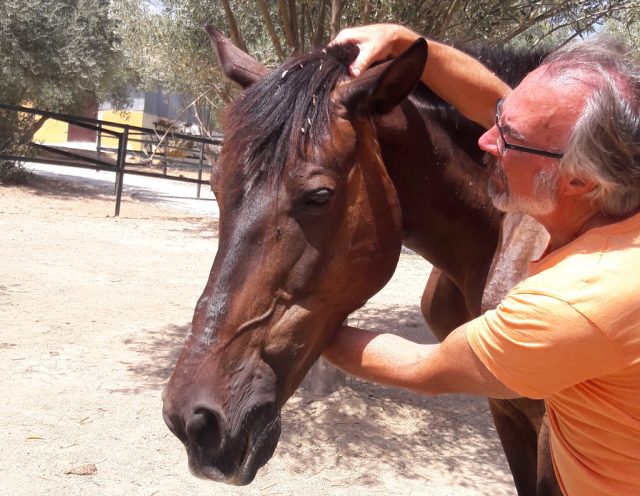
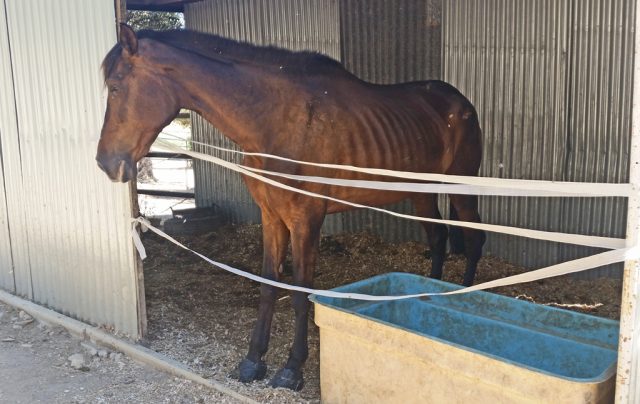
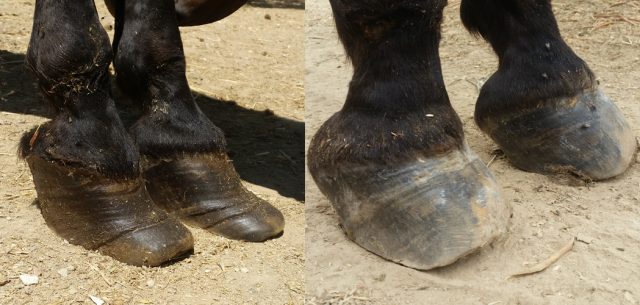
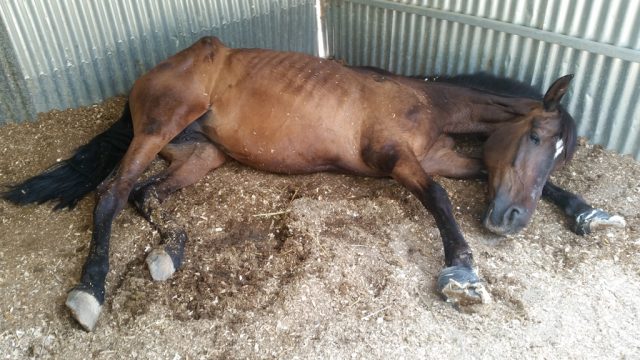
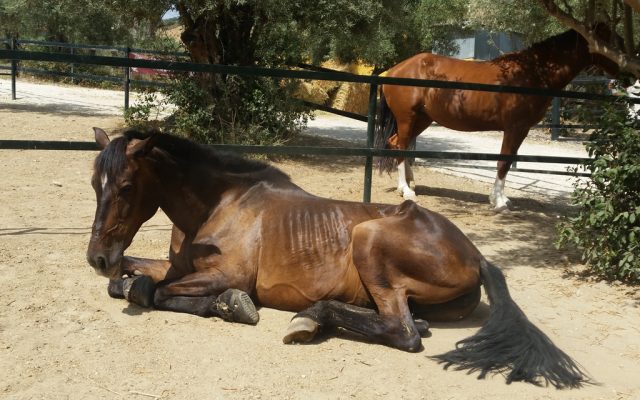

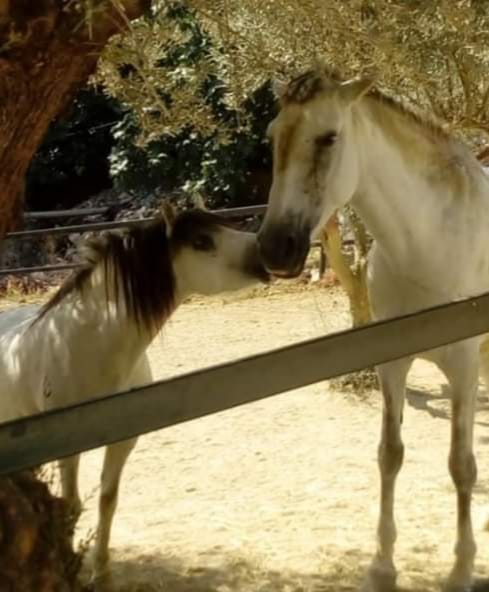
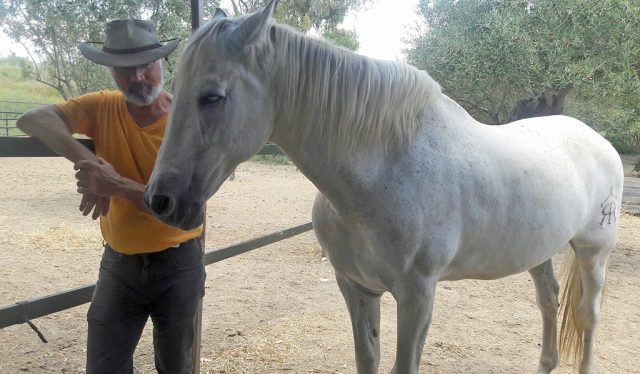

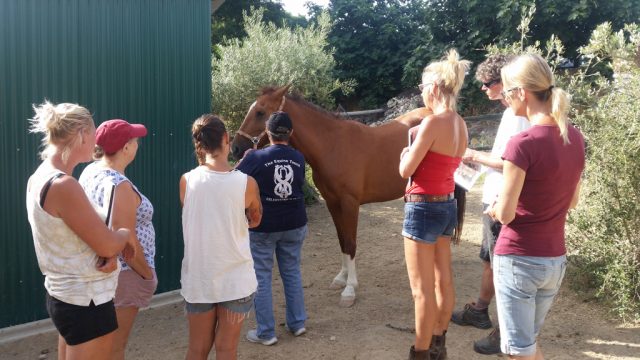
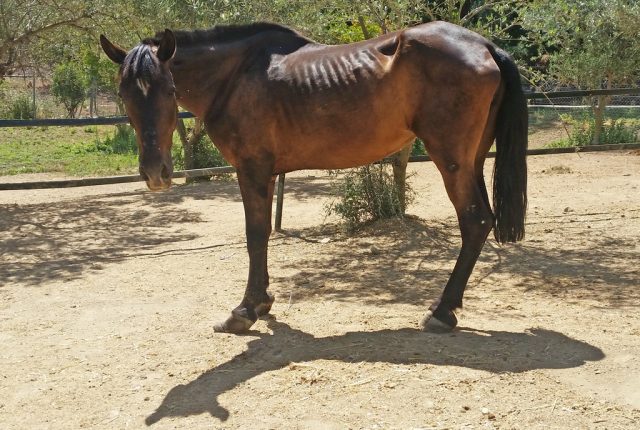



Wow!!!!! A very interesting read. Not sure that I can add any more at the moment as I am still digesting this. Have you found a new venue yet and/or are you still in Spain.
Kate 🙂
Hi Kate
I will be sending you a reply to your personal message as soon as I can.
Be well!
Andrew
So very, very sad and disturbing. That lovely horse deserved better than the abuse she got. I have heard about some horse rescues, even here in Canada, that do not really make a rescued horse’s situation any better. Horse rescues should really be run by very knowledgeable horse people, not just by anyone who wants to save a horse.
Thanks for all the wonderful work you did to at least try and make the horses feel better; I am sure they really appreciated the bodywork and your caring.
Thank you for your empathy, Anne-Marie!
Be well!
Andrew
This treatment the horse got is quite the normal treatment to handle this kind of neglect (Laminitis, founder). https://sixheartshoofcare.weebly.com/flaming-pepper-metabolic-founder-rehab.html So it is not really fair to accuse of animal abuse without thorough research, just out of sentiment. Sometimes you have to be strict to heal things. Apart from that, rescue organisations have to apply to laws about animal cruelty and neglect, and are under a scrutinous eye of the government.
Hi Francisca
If the treatment which the horse received is ‘quite … normal’ as you claim, should we not then expect the same outcome for all horses who receive it?
You are right when you say that, “it is not really fair to accuse of animal abuse without thorough research, just out of sentiment”. This is one of the reasons why I have not done this. Unfortunately, the example you link to cannot seriously be compared with Rhianna’s situation.
You are also right when you say that, “Sometimes you have to be strict to heal things”. This is what I mean when I say, “the vet may have felt that there was a need to act sooner because of potential or actual rotation of the pedal bone or for some other compelling reason”. As I also mention, such an invasive intervention as that which occurred with Rhianna should have been carried out by a hoof rehabilitation expert, which the barefoot trimmer is not and neither is the vet. In addition, there was a need for adequate resources, manpower and other facilities to provide proper after-care, which the horse rescue centre simply did not have at its disposal. In such a situation the horse’s death was ultimately inevitable and anyone with sufficient knowledge and expertise would have recognised that immediately.
You claim that, “rescue organisations have to apply to laws about animal cruelty and neglect, and are under a scrutinous eye of the government’. I so wish this was true! But even if it was, would it still be enough?
Be well!
Andrew
Yes, Andrew. I learned that the most important thing for doctors and veterinarians alike is ” First, do No Harm.”
Anne-Marie